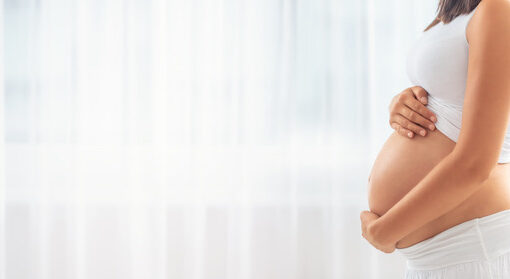Treatment options for rectus diastasis
Rectus diastases are often the result of pregnancy or massive weight gain. The resulting muscular instability in the abdominal area can cause back pain and brings with it a higher risk of abdominal wall hernia. Depending on the severity of the rectus diastasis, there are different treatment options.
Rectus diastasis after childbirth
The baby is here - and unfortunately so is the rectus diastasis. Although women can do exercises to strengthen and stabilise the abdominal wall as much as possible in advance, rectus diastasis cannot be completely avoided during pregnancy. Due to the massive pressure and weight, the straight abdominal muscles in the middle of the abdomen are pressed apart. The midline in between (linea alba), which consists of the enveloping layer of the muscles, the fasciae, thus becomes thinner and thinner. This poses a great risk of abdominal wall hernias, which can spread like Swiss cheese over the entire abdominal area. In the literature, this phenomenon is therefore also called Swiss Cheese Hernia. The rectus diastasis can be stabilised after birth with postnatal gymnastics and adapted everyday behaviour.
Lack of torso stability
Ultimately, however, the spreading of the muscles also leads to instability of the trunk, as the straight abdominal muscles are the counterparts of the straight back muscles. These are responsible for keeping us upright and stable on axis in space. The resulting instability can lead to back pain. The body tries to switch to other muscle groups such as the back, buttocks and pelvic muscles to maintain the necessary stability - actually an ingenious reaction of the body. But especially during pregnancy, the auxiliary muscles are also quickly overstrained, which manifests itself in low back and pelvic pain.
Regression after pregnancy
After pregnancy, you should follow the midwives' recommendations and start with postnatal exercises as soon as possible. The aim is to tighten the overstretched abdominal muscles and thus relieve the weak midline. It is important to include all abdominal muscles (the posterior deep, the lateral oblique as well as the anterior straight abdominal muscles) in the training. Unfortunately, rectus diastasis cannot always be corrected by training.
The three stages of rectus diastasis
A rectus diastasis, i.e. the divergence of the straight abdominal muscles in the midline, is divided into three stages. In stage 1, the distance between the straight abdominal muscles is up to three centimetres, bearing in mind that the normal distance in an inconspicuous abdominal wall is only a few millimetres. In stage 2, the distance may be between three to five centimetres. If the distance is more than five centimetres, it is called a rectus diastasis stage 3. The decision whether surgery is necessary depends on the symptoms, the size of the abdominal wall instability and possible hernias. Basically, a rectus diastasis stage 3 can only be corrected by surgery. A clinical examination is not sufficient for an exact diagnosis. An ultrasound is absolutely necessary to define the exact width and, above all, to exclude small incipient hernias. In principle, surgery should be done no earlier than one year after pregnancy, unless it is an emergency.
Operating a rectus diastasis
In the case of a very sagging abdominal wall and symptomatic recutting diastasis, surgery must be considered. This can be performed minimally invasively, by means of conventional laparoscopy or with the aid of a surgical robot. In this way, perfect stability of the middle of the body can be achieved anew, but often the final result is not ideal cosmetically. In an open operation, which in effect is the same as an abdominoplasty, the muscles are moved back to the midline and the entire centre is reinforced with a dissolvable or permanent plastic mesh. Excess skin can also be removed and the abdomen tightened during this type of surgery, if necessary. Following the operation, a six-week rest period is necessary, during which an abdominal belt should be worn and sports and lifting heavy weights must be strictly avoided. This can be a great challenge, especially after childbirth or with a small child. Following the rest period, patients should attend intensive physiotherapy for 2 to 3 months. The abdominal muscles, which are now in the correct position, can then be rebuilt and trained so that they are able to restore the actual stability of the abdominal wall. Do you possibly suffer from a rectus diastasis or a hernia? Contact the Hernia Centre Switzerland (Hernienzentrum Schweiz) - we will advise you competently and professionally.
Andere Beiträge
Difficulty swallowing and heartburn can indicate a hiatal hernia. How this is treated is best decided by a gastrointestinal specialist and a skilled surgeon working as a team.
Rectus diastases are often the result of pregnancy or massive weight gain.
Men who play sports intensively or even practice a sport professionally complain about groin pain time and again.




